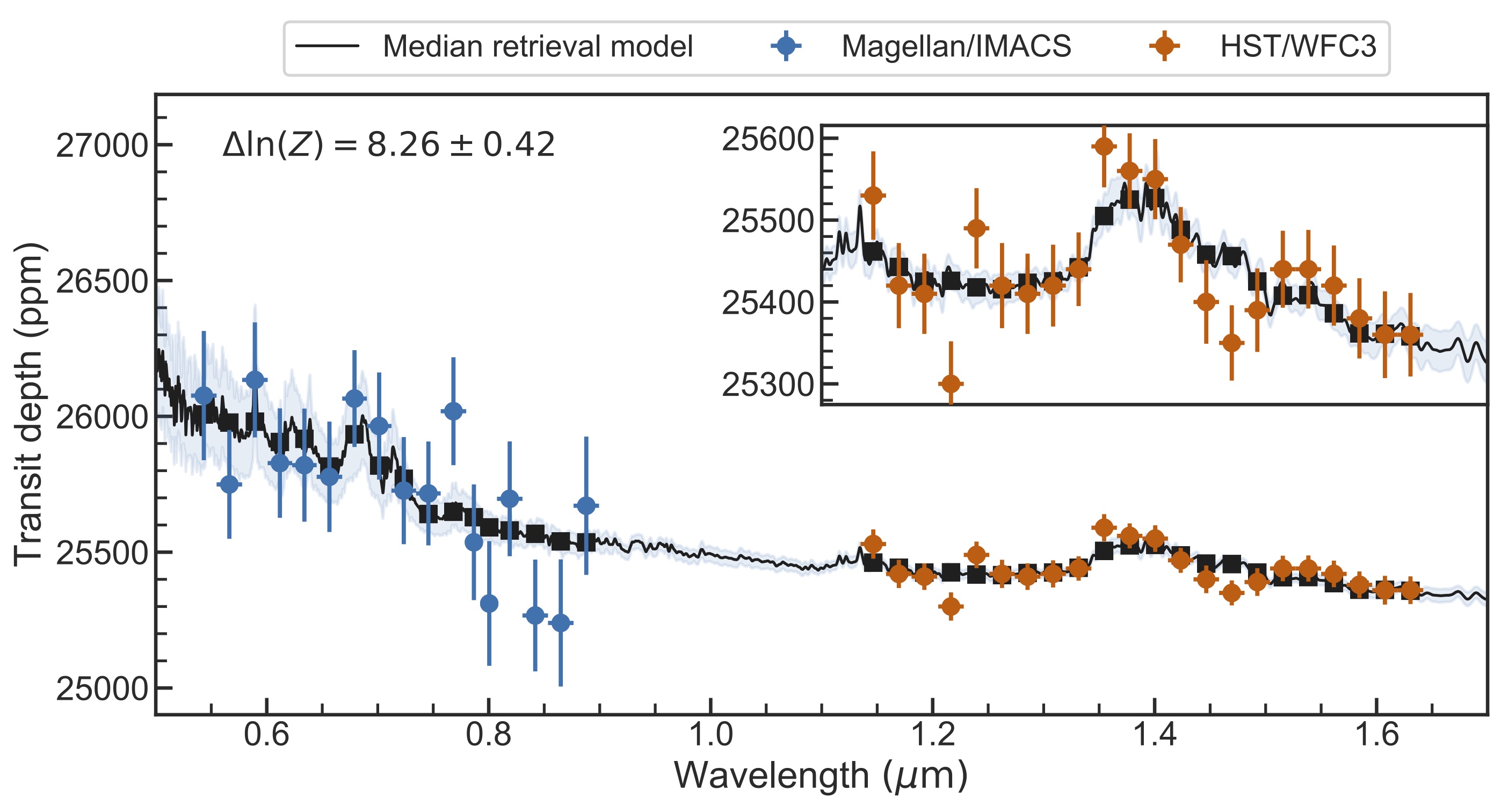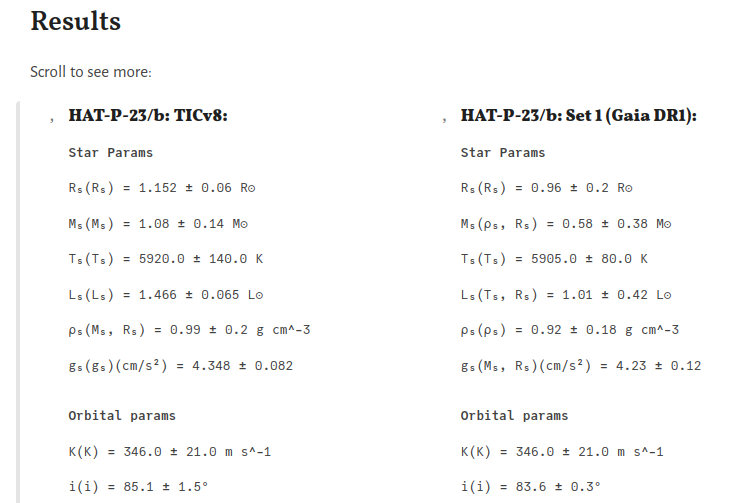
About
Ian C. Weaver, Ph.D.
Howdy, I'm Ian.
I did my PhD at the Center for Astrophysics | Harvard & Smithsonian studying exoplanets with large telescopes and writing software to analyze them. I had the opportunity to work on all stages of the process, including extraction and reduction of the raw time series spectral data, detrending of potential signals via different Gaussian Process (GP) and Principal Component Analysis (PCA) techniques, and the applications of a range of statistical Bayesian inference frameworks including Markov chain Monte Carlo (MCMC) and nested sampling to study the atmospheres of these other worlds.
In my free time, I love rowing, participating in STEM outreach in underrepresented communities, and learning more about Julia with other folks!
Projects
Tutor-mentor / student matching
As a tutor coordinator, I was looking for an efficient way to match tutor-mentors with students. This turned into a fun weekend project turning the raw data from the awesome scheduling tool WhenIsGood into a colorful matching matrix showing the common overlap in different people's schedules.
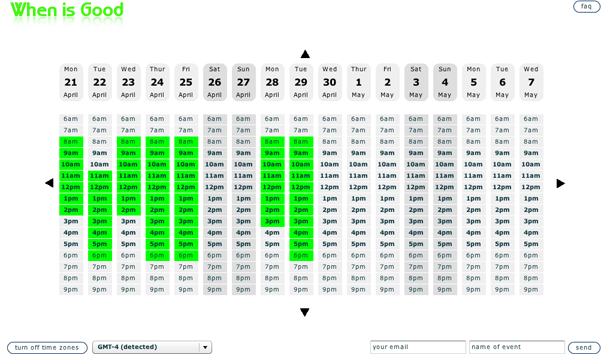

Exoplanets
Data wrangling/visualization of publicly available exoplanet data, with Julia and Pluto.jl.
spacejam
Python package for numerical integration, powered by automatic differentiation.
Integrated orbit of a hypothetical three-body star-planet-moon system via s=2 Adams-Moulton method. This is motivated by the first potential discovery of an exomoon made not too long ago.
The same integration method applied to the Lotka–Volterra system of differential equations describing population growth.
Accretion stream toy model
Orbital dynamics code written in Fortran, visualized in Python.
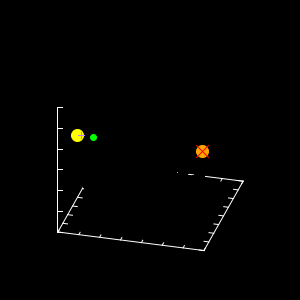
Particle stream trajectory in a binary Roche Potential with artificial energy loss every time step to mimic the energy that is lost to shocks and other collisions in real fluid interactions. This was done by having the test particle lose energy while maintaining its angular momentum. I also added a little kick in the z component of the particle's initial velocity to make it a little more fun to watch.

Top-down view of the same code applied to WASP-12/b (to scale). I waited until a full orbit to turn on the artificial energy loss to mimic one full lap of the accretion stream before colliding with itself. The corners due to the Coriolis force are clearly seen and the orbit settles down into its circularization radius (in green), as predicted from angular momentum conservation.
Accretion disk fluid simulations
Hydrodynamical simulations of planetary cannibalism made with FLASH.
An analog to the toy-model from the particle trajectory code above. I replaced the massless test particle in that code with a fluid outflow boundary, following properties adopted from Lai et al. (2010). I then added an artificial ramp up in density at around the 5 day mark to effectively fast-forward the disk to a more evolved state.
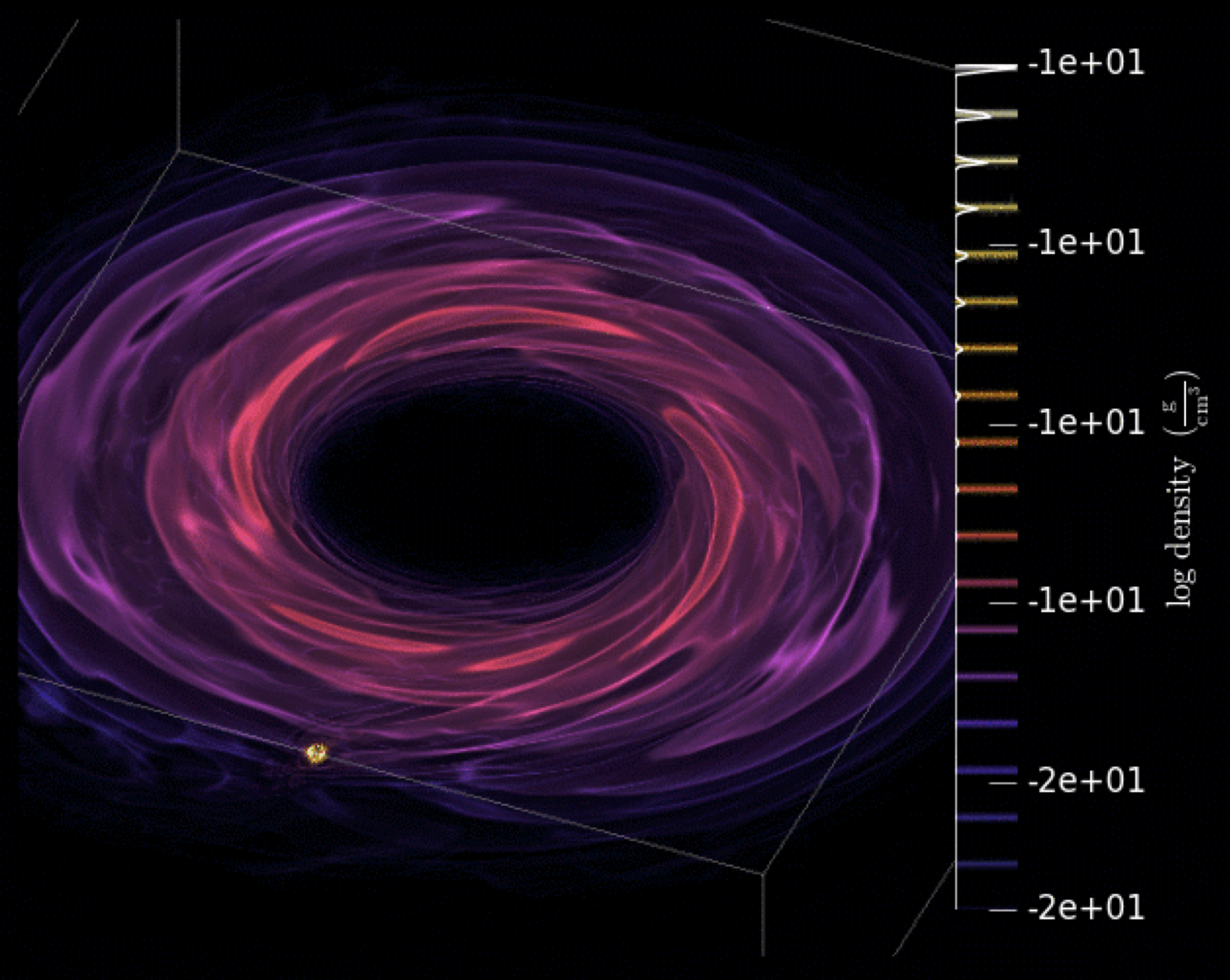
I adapted the hydro simulation to 3D to create the image above. This is an isodensity contour plot taken partway through the simulation. The location of L1 can be seen as the orange-yellow sphere towards the bottom left. These simulations were used to create virtual light curves to compare with observations from HST's Cosmic Origins Spectrograph.
Research
WASP-50b (Weaver et al. submitted)
We present a new ground-based visual transmission spectrum of the hot Jupiter WASP-43b, obtained as part of ACCESS. We collected four transits observed between 2015 and 2018, with a combined wavelength coverage between 5300 and 9000 Å and an average photometric precision of 708 ppm in 230 Å bins. We perform an atmospheric retrieval of our transmission spectrum combined with literature Hubble Space Telescope/WFC3 observations to search for the presence of clouds/hazes as well as Na, K, Hα, and H₂O planetary absorption and stellar spot contamination. We do not detect a statistically significant presence of Na I or K I alkali lines, or Hα in the atmosphere of WASP-43b. We find that the observed transmission spectrum can be best explained by a combination of heterogeneities on the photosphere of the host star and a clear planetary atmosphere with water.
HAT-P-23b (Weaver et al. 2021)
WASP-43b (Weaver et al. 2020)
